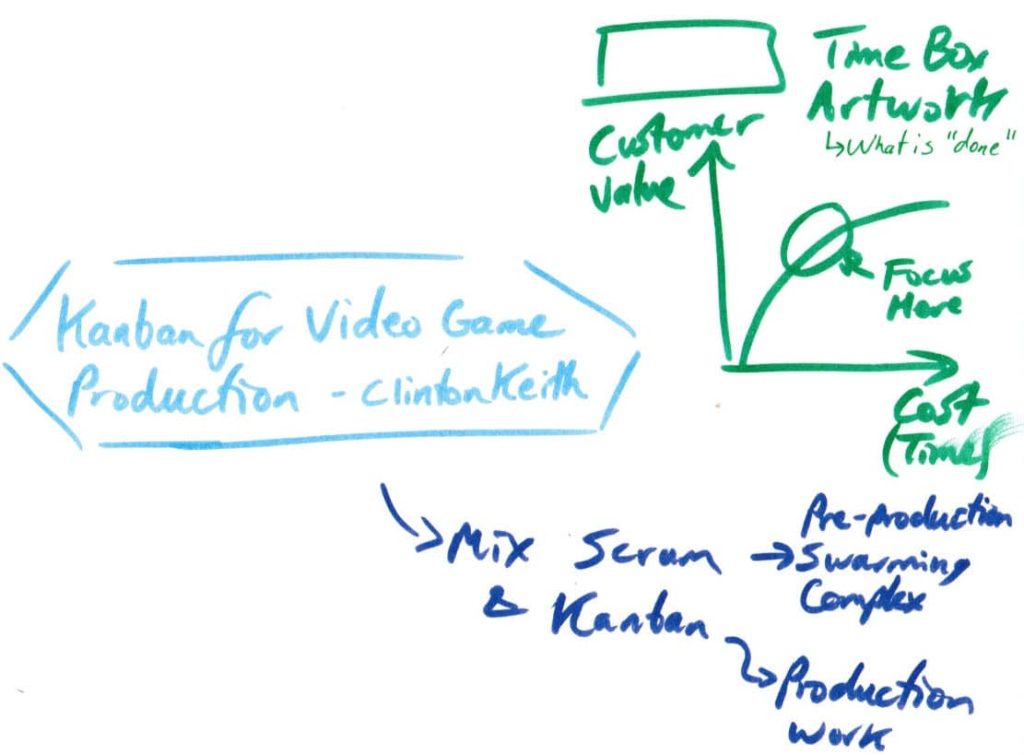Clinton Keith gave an insightful session around designing and configuration a Kanban system for leveled video game production.
Clinton described Scrum and Kanban coexisting peacefully. They used cross-functional Scrum teams to drive collaborative creative work at the outset of the project where team members would swarm stories. Aside from creating the game concept and playability, one of the outputs was to design and implement a Kanban system for producing game levels.
Game level construction requires different highly-specialized skill sets cannot help each other out – the audio engineer doesn’t know anything about graphic design. So Kanban is perfect. A system with fixed takt time was constructed and staffed appropriately to have a steady creation of game levels. Even the levels were broken up into zones to reduce batch size and improve flow.
Some team members continued to run 2 week sprints on solving challenging problems that came up during level construction and playability. For this environment it seems like Scrum and Kanban are both appropriate. This is a huge take-away for me – a better understanding of where Scrum makes sense and where Kanban makes sense.
Another interesting story was to Time Box Art to balance customer value with cost/time when developing artwork (see graph below). Artwork can go on very a very long time and it is difficult to define done. One solution to this is to create a timebox to focus work at the point of diminishing returns. Another benefit is that a timebox can drive creative energy. The example given was that for a high-speed car chase through Paris, you don’t need high-resolution buildings.
If you are interested in learning more, his book Agile Video Game Production is coming out May 2010. Video and slides of the session is on InfoQ.



